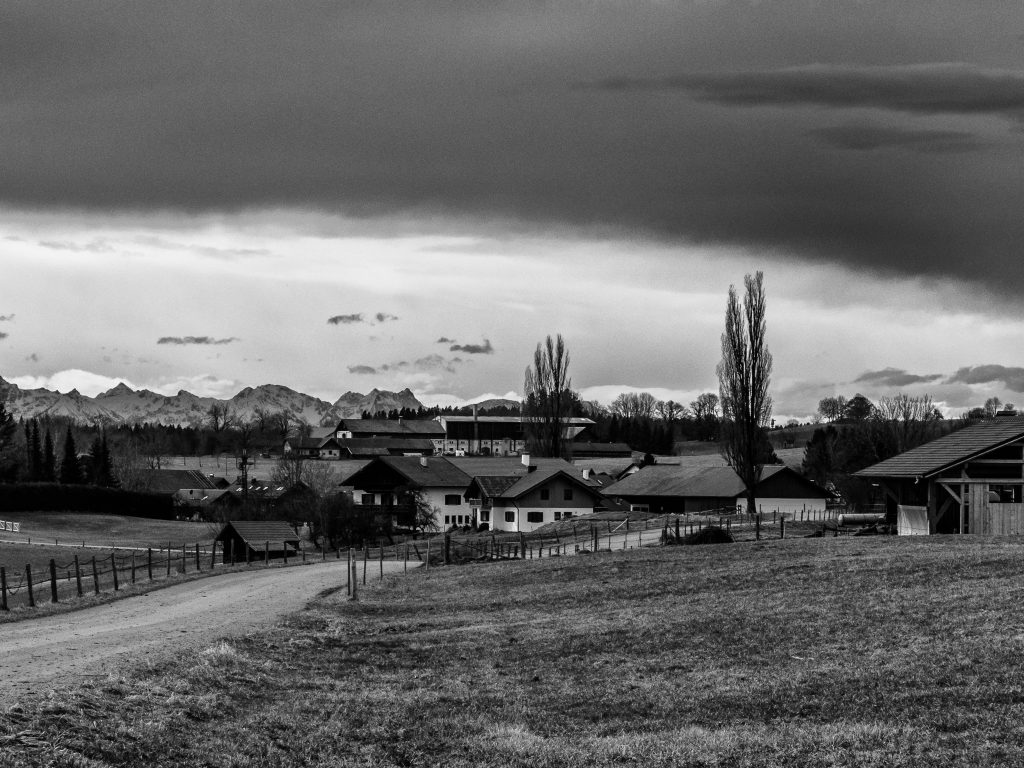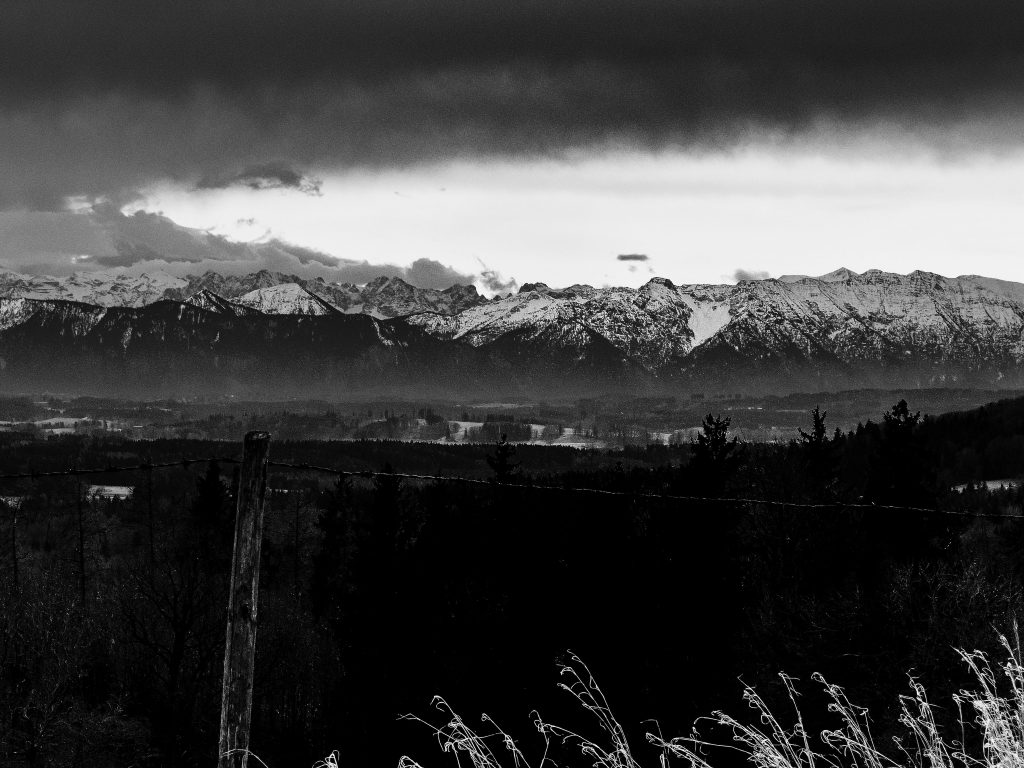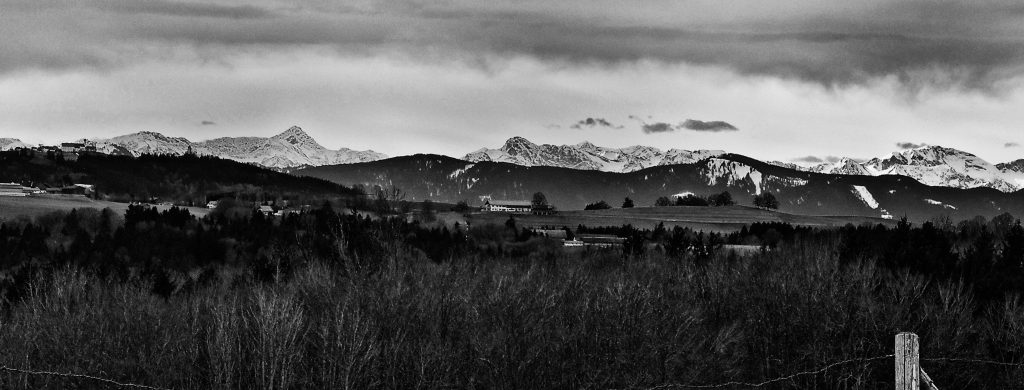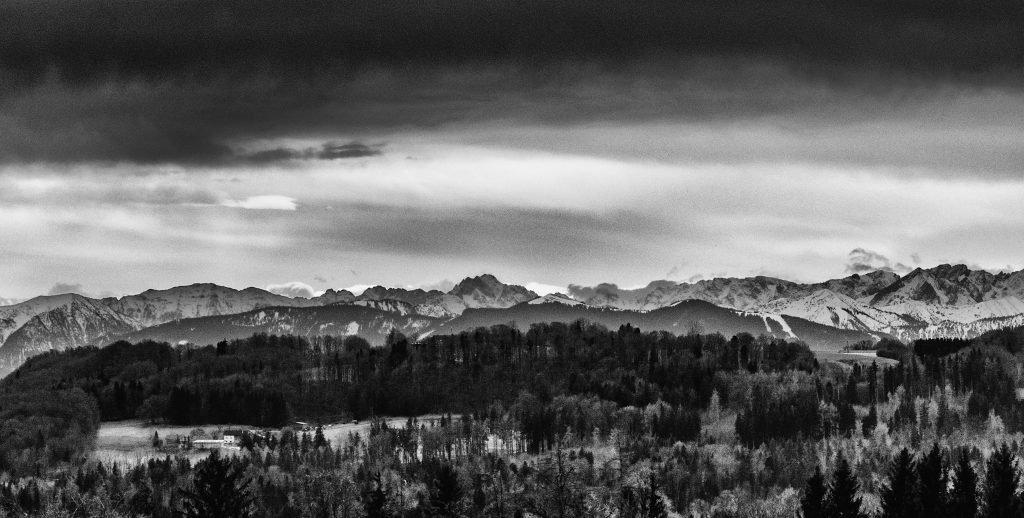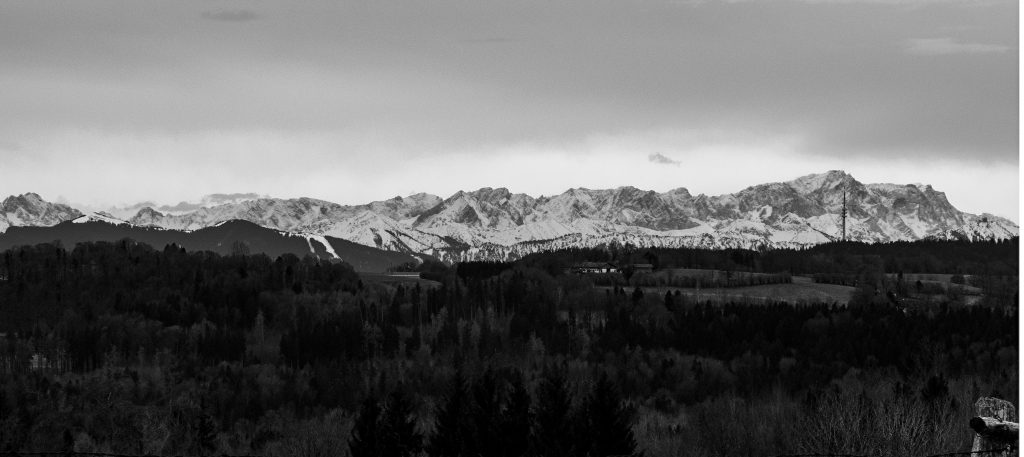Alpine Wildnis, leicht zugänglich: Das Oytal als Top-Location für Landschaftsfotografie
von Peter Engelmann, April 30, 2022
Das Oytal ist ein hochalpines Tal an der Südspitze Deutschlands und eines der beliebtesten Ziele für Touristen und Wanderer, die in Oberstdorf wohnen. Ausflüge dorthin beginnen direkt an der Talstation der Nebelhornbahn. Von hier aus führen mehrere Wanderwege ins Oytal.
Einer der Wege bringt euch zunächst ins malerische Trettachtal (wo an einer Abzweigung das Oytal beginnt) und zu einem ersten grandiosen Ausblick mit den Gipfeln der Allgäuer Alpen im Hintergrund. Ein weiterer Weg führt hoch über den unteren Teil des Tals und bietet viele Ausblicke. Auch für Filmemacherinnen und Fotografen ist das Oytal das ganze Jahr über ein Top-Ziel.
.
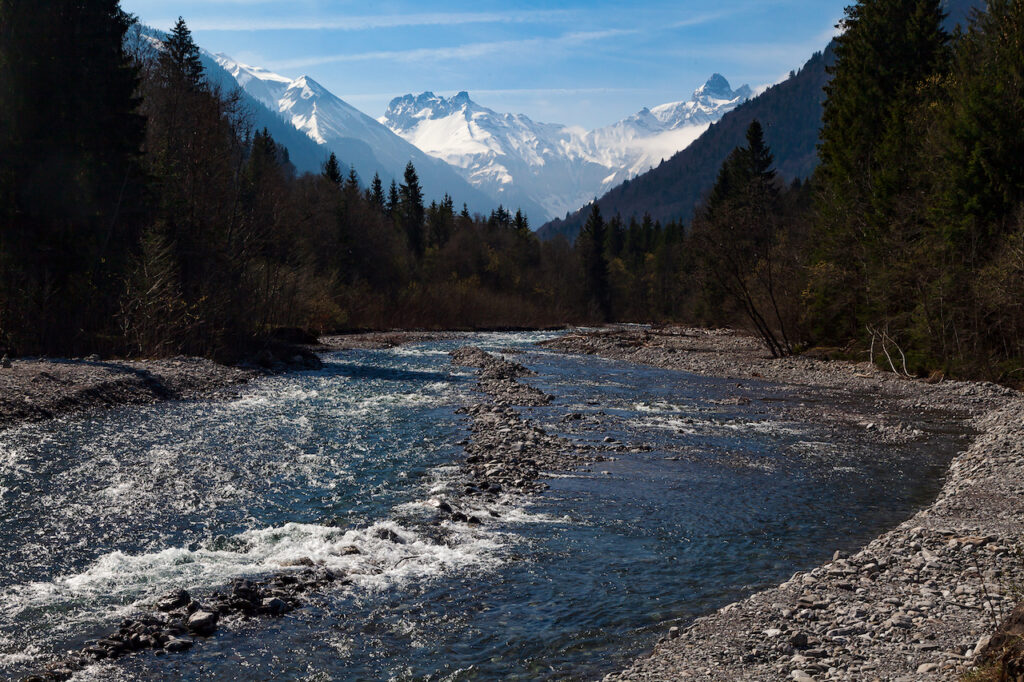
Das Trettachtal bei Oberstdorf
Das Besondere hier ist, dass niemand die Straße oder die bequemen Wege verlassen muss, um an Orte mit fantastischen Foto- und Video-Motiven zu gelangen. Es gibt eine Straße (für den normalen Verkehr gesperrt), die zum Oytalhaus führt, einem traditionellen Berggasthof mit ausgezeichnetem Essen und noch spektakuläreren Aussichten. Ihr erreicht dieses schöne Berggasthaus nach nur 1,5 Stunden Wanderung.
Leichte Wege ohne starke Anstiege
Die Wege von der Nebelhornbahn bis zum Oytalhaus sind für normale Wanderer kein Problem und leicht begehbar. Der kontinuierliche, leichte Anstieg ist ohne steile Abschnitte. Der untere Weg, der bei der Brücke über die Trettach beginnt, heißt Dr. Hohenadl-Weg. Er führt durch einen beeindruckenden Bergwald.
Nach ein paar Kurven tauchen die imponierend hohen Gipfel der monumentalen Berge auf. Dann erreicht der Weg eine schöne Baumallee, eine weitere Besonderheit im Oy-Tal. Während der Saison wird diese Straße von zahlreichen Touristen genutzt, unter ihnen viele Radfahrende.
Das Tal wird breiter und auf der linken Seite kommt die bekannte Seebachwand in Sicht, eine gigantische, geradezu einschüchternde Felswand, an der mehrere Wasserfälle zu erkennen sind. Tatsächlich befindet sich hier einer der höchsten Wasserfälle Europas, direkt gegenüber dem Berggasthof Oytal-Haus. Falls ihr Fotos von den Wasserfällen machen wollt, ist die beste Zeit dafür im Frühling, wenn viel Wasser herunterkommt. Die Wasserfälle im unteren Teil des Tals liegen in einiger Entfernung, und es ist sinnvoll, eine lange Brennweite zu benutzen. Sowohl im Frühling als auch im Herbst kann man in dieser einzigartigen Bergwildnis wunderschöne Farben sehen.
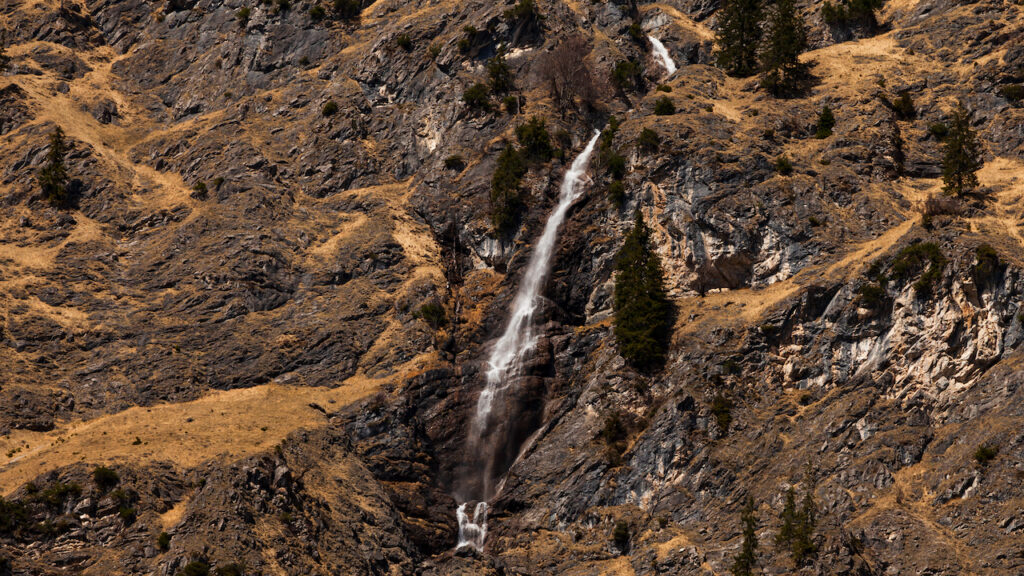
Seebachwand: Beeindruckende Wasserfälle
Der Weg zwischen dem Oytalhaus und einigen Almen führt zu immer eindrucksvolleren Ausblicken auf die Gipfel und ihre einzigartigen Formen. Auch hier ist der Frühling eine gute Zeit zum Filmen und Fotografieren, solange die Berggipfel noch weiß vom Schnee des letzten Winters sind. Links und rechts davon befinden sich Almwiesen mit seltenen Alpenpflanzen. Bitte seid vorsichtig, denn dies ist ein Naturschutzgebiet, und ihr solltet mithelfen, Tiere und diese seltenen Pflanzen zu schützen. Es gibt ausreichende Möglichkeiten für Video- und Fotoaufnahmen direkt auf dem Weg.
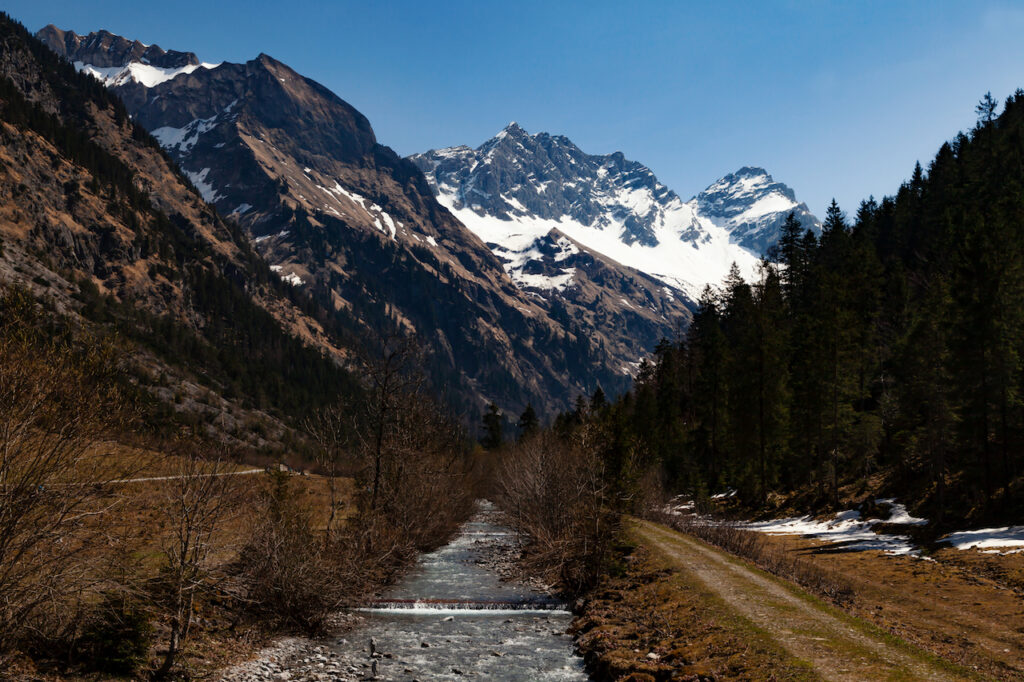
Das Oytal
Wenn ihr Fotos machen wollt und eine ruhige Atmosphäre braucht, ist die Zeit während der Woche, vor oder nach den Hauptferienzeiten oder an einem Tag mit bewölktem Wetter, eine gute Wahl. Im Sommer könnt ihr für die Rückfahrt auch Bergroller mieten – das geht schnell und macht mega viel Spaß! An den Wochenenden kann es im Oytal sehr voll werden. Auch Mountainbiker sind häufig anzutreffen. Trotzdem gibt es genug Platz für jeden, um die fantastische Natur zu genießen.
Der Weg von der Trettachtalbrücke und dem Oytal-Haus ist nur Teil eines viel größeren Wegenetzes, das hoch in die Berge führt. Er ist eine Zeit lang noch sehr gemütlich (bis zur nächsten Alm), aber er ist langwierig und im oberen Teil gibt es einen steilen Anstieg. Dort oben gibt es weitere Almen, die im Sommer Getränke und regionale „Schmankerln“ anbieten. Ein weiterer großer Wasserfall, der Stuibenfall, befindet sich weiter unten auf dem Weg. Er liegt näher am Weg als die ersten und sieht fantastisch aus, aber um ihn zu erreichen, macht man noch einmal einen 1,5 Stunden langen Spaziergang vom Oytalhaus.
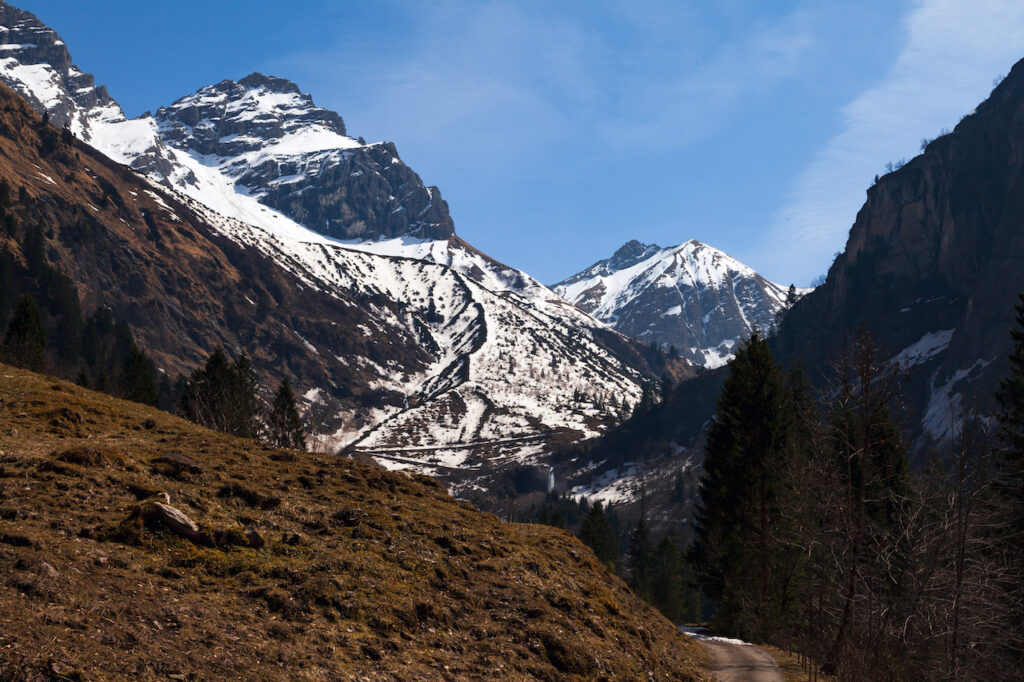
In einigen Gebieten liegt im April noch Schnee.
Typisch für diese Region sind die grasbewachsenen Berge. Sie sollten von Bergsteigern nicht unterschätzt werden, da sie sehr anspruchsvoll sein können. Die Region ist aufgrund ihrer unterschiedlichen Gebirgsformen und der Materialien, aus denen sie bestehen, für Geologie-Interessierte sehr spannend. Ihr seht außergewöhnliche Gesteinsformen und Berge aus verschiedenen Erdzeitaltern.
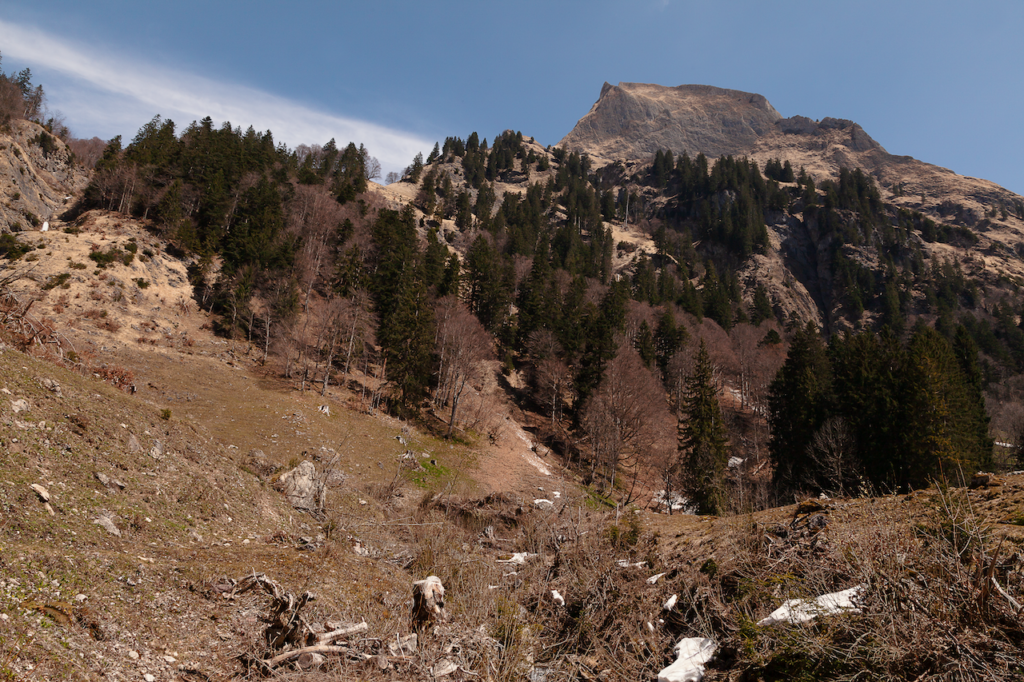
Hoher Grasberg
Wie immer in alpinem Gelände ist eine gute Vorbereitung das A und O. Das Oy-Tal ist leicht zu erreichen, aber man sollte wissen, welche Entfernungen (Gehzeiten) und welche weiteren Möglichkeiten es gibt. Im Sommer ist auch eine anstrengendere Rundtour mit einem Abstieg in ein anderes Bergtal möglich. Diese ist jedoch eher etwas für Leute mit guter Kondition. Auch die Wetterbedingungen können sich schnell ändern.
Im Frühjahr kann es vorkommen, dass im oberen Teil des Tals Wasser in kleinen Bächen über den Weg fließt. In manchen Jahren kann auch im späten Frühjahr noch Schnee in den schattigen Teilen des Tals liegen (geeignetes Schuhwerk dringend empfohlen!). Im Sommer sind die oberen Bereiche der Sonne ausgesetzt.
Beim oberen Teil mit Berggipfeln und weiteren Attraktionen wie dem Eissee hoch über dem Tal solltet ihr bedenken, dass dort ganz andere Bedingungen herrschen als im unteren Teil des Tals mit bequemen Straßen und Wegen. Es handelt sich um schwieriges felsiges und alpines Terrain. Solch ein Gebiet erfordert Erfahrung im Bergwandern. Es ist ein faszinierendes, aber auch potenziell gefährliches Wildnisgebiet. Die Fremdenverkehrsbüros in Oberstdorf und anderen Orten im Allgäu können euch sicherlich mit ihren Ratschlägen weiterhelfen. Dort erfährt man auch, ob die Wanderwege geöffnet oder geschlossen sind und ob die Berghütten offen sind. Die Oytal-Wanderwege sind mit der Bahn und mit dem Auto erreichbar. In der Nähe der Nebelhornbahn-Station befindet sich ein großer Parkplatz. Zug und Busse verkehren häufig und sind – wie meist – eine gute Alternative zum Pkw.
© Deutsche Übersetzung: Susanne Niemuth-Engelmann / Redaktionsbüro Niemuth, https://redaktionsbuero-niemuth.de/ / 27.01.25

